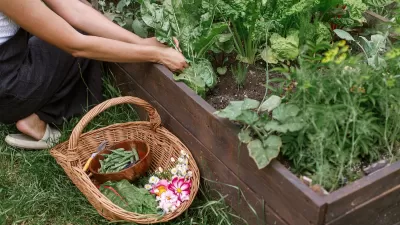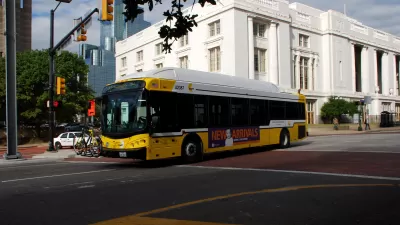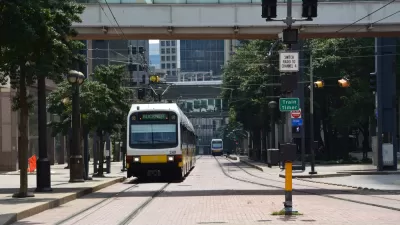A hydroponic farm on the grounds of the Texas State Fair helps residents in the food deserts of South Dallas.

What started as 500 raised dirt beds in a parking lot in Fair Park in Dallas has evolved into an indoor hydroponic farming operation growing plants in nutrient-rich water. Big Tex Urban Farms has grown 600,000 servings of produce in two years of operation, says Karel Holloway:
The bulk of the farm's produce now comes from hydroponic systems in the fair’s big greenhouse. There's no dirt, and it's never too hot, too cold, too wet or too dry. Food can be harvested year-round, and it has boosted production more than fivefold, according to the State Fair. It also doesn't have to be moved in the fall and can act as an educational exhibit during the fair.
The farm has kept some of its original growing boxes to show the different ways food is grown. The others were distributed to organizations in the area so they could grow vegetables for the people they serve.
In addition, vegetables from the farm are taken to neighborhoods in South Dallas for residents, who might not have easy access to fresh produce, to pick up. The crops have included lettuce, peppers, potatoes, onions, okra, and other greens.
FULL STORY: Big Tex Urban Farms now focused on hydroponic growing to help feed South Dallas

Trump Administration Could Effectively End Housing Voucher Program
Federal officials are eyeing major cuts to the Section 8 program that helps millions of low-income households pay rent.

Planetizen Federal Action Tracker
A weekly monitor of how Trump’s orders and actions are impacting planners and planning in America.

Ken Jennings Launches Transit Web Series
The Jeopardy champ wants you to ride public transit.

Crime Continues to Drop on Philly, San Francisco Transit Systems
SEPTA and BART both saw significant declines in violent crime in the first quarter of 2025.

How South LA Green Spaces Power Community Health and Hope
Green spaces like South L.A. Wetlands Park are helping South Los Angeles residents promote healthy lifestyles, build community, and advocate for improvements that reflect local needs in historically underserved neighborhoods.

Sacramento Plans ‘Quick-Build’ Road Safety Projects
The city wants to accelerate small-scale safety improvements that use low-cost equipment to make an impact at dangerous intersections.
Urban Design for Planners 1: Software Tools
This six-course series explores essential urban design concepts using open source software and equips planners with the tools they need to participate fully in the urban design process.
Planning for Universal Design
Learn the tools for implementing Universal Design in planning regulations.
Heyer Gruel & Associates PA
Ada County Highway District
Institute for Housing and Urban Development Studies (IHS)
City of Grandview
Harvard GSD Executive Education
Toledo-Lucas County Plan Commissions
Salt Lake City
NYU Wagner Graduate School of Public Service





























